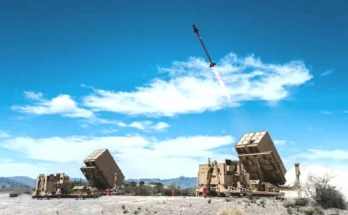
The EC-37B Compass Call electronic attack aircraft is one of the biggest items on the U.S. Air Force’s Unfunded Priorities list for FY23. The Air Force is requesting $979 million for procurement and support of four new EC-37Bs.
The EC-37B is a special mission Gulfstream G550 that replaces decades-old EC-130H platforms. The four additional aircraft that the nearly $1 billion would fund would bring the EC-37B fleet to the Air Force’s desired number of 10. The first two EC-37Bs are expected to achieve Initial Operational Capability by 2023.
Compass Call missions are flown primarily in support of tactical air operations, but can also be used to eavesdrop on enemy combatants and provide information to ground and sea forces. Operators employ “surgical” standoff jamming against adversaries to prevent specific communications from being transmitted or to degrade the transfer of information essential to the command and control of weapons systems.
The urgency of the Air Force’s request that this program be fully supported has no doubt been given a boost by the war in Ukraine, with its daily display of how communication breakdowns result in disaster on the battlefield. In operation for over 20 years, the aircraft were used extensively throughout the war on terror, only ending their engagement in Afghanistan near the end of 2021. It would be very surprising if the U.S. Air Force did not get its wish on this one.
In July 2018, BAE Systems, working with L3Harris, began transitioning Compass Call systems from the EC-130H aircraft to the new platform under the Cross Deck initiative, as it is commonly called. This new platform will provide combatant commanders with improved standoff jamming capability and flexibility to counter newer and increasingly sophisticated communications and radar threats.
In April 2021, BAE Systems flight-tested its Small Adaptive Bank of Electronic Resources (SABER) technology, paving the way for a critical software upgrade to the EC-37B. SABER transitions Compass Call’s electromagnetic spectrum (EMS) warfare capability from a hardware- to a software-based system. This enables the rapid integration of new technology through software updates, instead of hardware reconfiguration, allowing for multiple system upgrades to counter emerging threats.
Forecast International’s Electronic Warfare Forecast provides coverage of self-protection and early warning systems for military platforms, both in the skies and on the surface. This service features reports on notable systems such as the Next Generation Jammer and the Eurofighter EW suite, as well as electronic intelligence gathering and radar and missile warning systems currently available or in development. An annual subscription includes 80 individual reports, most with a 10-year unit production forecast. Product comes complete with three Market Segment Analyses covering the markets for: Decoys Dispensers; Electronic Attack Systems; and Electronic Support Measures. Click here to learn more.
Andrew Dardine is lead analyst for Forecast International's Defense Electronic Systems group. He is the primary author of Forecast International's Electronic Warfare Forecast and co-author of Electro-Optical Systems Forecast and C4I Forecast. Andrew is also a regular contributor to FI's Defense & Security Monitor blog, offering insights into developing technologies such as directed-energy and next-generation jamming systems. His analysis of such vital market areas as EO/IR systems and electronic countermeasures technology has been cited in Defense News, Aerospace Daily, and Bloomberg Businessweek, among other news media. He has also written about the electronic defense market for Aviation Week and the Journal of Electronic Defense.




